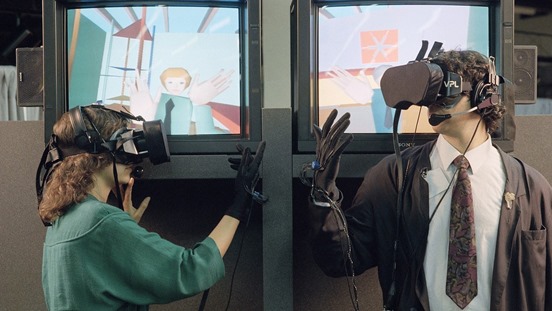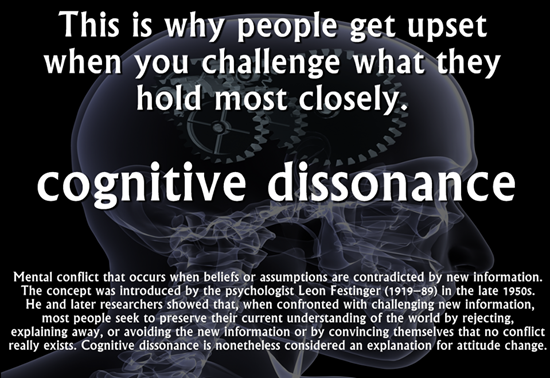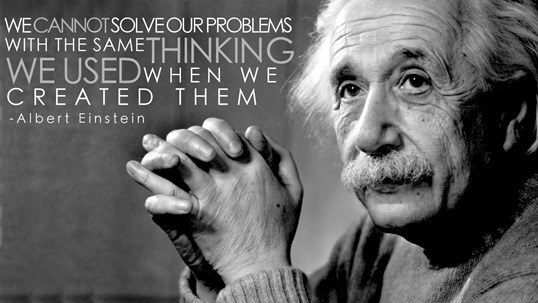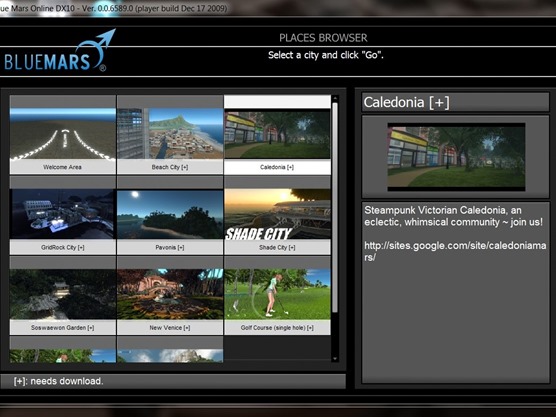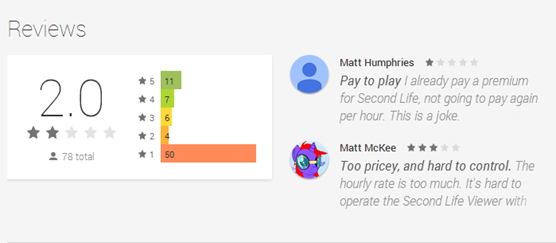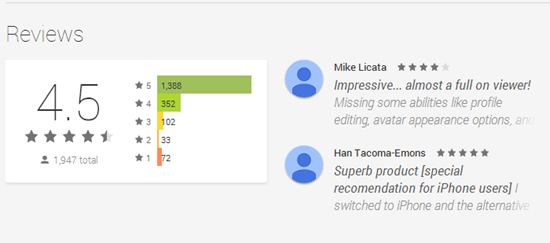The Reports of it’s Death Are Exaggerated
Don’t you just love lazy journalism? So, it turns out that in a recent TechCrunch article, the author was essentially writing a total fabrication based out of thin air. What did you expect from a write-up citing unnamed anonymous sources, right?
Well, you’d think so.
Unfortunately, it looks like one too many people have jumped on the bandwagon. Places that you’d expect would check for sources and not just pile on with the rumors. Ars Technica, The New York Times, and more have picked up the ball and ran with it as if it’s a fact. The problem here is that the same places running with the ball are also the usual suspects who have been bemoaning the existence of Google+ from day one and wishing really, really, hard that it’ll just go away.
The New York Times, for instance, doesn’t even engage with the Google+ community even though they have an account there. TechCrunch is exactly the same way, and it’s no surprise that the usual bunch of whiners are writing up hit pieces declaring the demise of Google+
Not even the Chief Architect at Google itself is enough to put this to rest, considering he literally said the TechCrunch article was total bullshit, and that Google+ wasn’t going anywhere.
I’ll give you the link to that article here:
http://www.googleplusdaily.com/2014/04/yonatan-zunger-puts-google-walking-dead.html
 But this guy... Yonatan Zunger... he could totally be some random guy on the Internet. It’s not like he’s in any position of authority to be quoted, right? Well, no... Yonatan is the Chief Architect at Google+. I don’t think you get any more credible than that, really...
But this guy... Yonatan Zunger... he could totally be some random guy on the Internet. It’s not like he’s in any position of authority to be quoted, right? Well, no... Yonatan is the Chief Architect at Google+. I don’t think you get any more credible than that, really...
Yet here we are spreading rumors on unnamed sources from people who absolutely suck at Google+ in every single way, and the people spreading it around as truth are conspicuously also the usual people who refused to use it, refused to engage at all, and expect the whole world to come fawn over them.
You would think that we wouldn’t been seeing all of this bandwagon jumping across the Internet, knowing full well that the article has unnamed sources, and is completely shot to hell as a rumor by employees of Google.
Just one Google employee is not enough of a source! Right?
Fine... let’s see what Moritz Tolxdorff has to say about it.
 But wait! Who is this Moritz Tolxdorff person anyway? I mean, it could just be some random guy on the Internet with no relevance to the situation at all... Or he could be the Community Manager for Social & Chrome at Google. It’s one thing to write from “unnamed sources” and have the tech media run on complete bullshit, but it’s another when you start citing Google Employees. Even the Chief Architect at Google has flatly debunked the TechCrunch article as “bullshit” and total fabrication.
But wait! Who is this Moritz Tolxdorff person anyway? I mean, it could just be some random guy on the Internet with no relevance to the situation at all... Or he could be the Community Manager for Social & Chrome at Google. It’s one thing to write from “unnamed sources” and have the tech media run on complete bullshit, but it’s another when you start citing Google Employees. Even the Chief Architect at Google has flatly debunked the TechCrunch article as “bullshit” and total fabrication.
What started this rumor? Well, funny enough the genesis of this mass stupidity is that Google+ had actually become bigger than the building could contain and so the team was moving to a bigger building. Yes, Google+ as a team (and service) had become bigger than the building could contain and so they are giving them more room.
All of this simply because the guy who was in charge of the Google+ team decided to move on to something else, letting somebody else step into the position. Apparently that was enough to start the speculation mills again... which boils down to a bunch of high-profiles trying to save face.
What it boils down to is this:
The usual suspects going on about the imaginary demise of Google+ are doing so from the perspective of refusing to engage with it, the audience themselves, refusing to take the time to network and grow a following, have discussions with the absolutely huge audience there, and so on.
They come in from Facebook, and pretend like Google+ as an audience automatically owes them the attention from day one, and when they refuse to engage or bother, they throw a fit and walk away. Then they go on about how Google+ is a “ghost town” (I’ve got over 2 million views on posts, and thousands of followers), they write something about how Google+ was “forced” on everyone and nobody really wanted it...
Ok, I need to address that one head-on, because it’s old-hat.
Google's Eric Schmidt Says Plus Is An 'Identity Service' Not A Social Network
As early as 2011 when Google+ began, it was flatly stated that Google+ was first, and foremost, an Identity Service. It covers social network elements, but the truth of the matter is – the entire Google SaaS is the Social Network now, and Google+ is the unified login. You don’t get any clearer than the article on Forbes citing Eric Schmidt himself about what Google+ is about.
Google+ is an identity service first and foremost. It connects the entire SaaS ecosystem of Google together and empowers each and every thing Google is now doing in the ecosystem by allowing a unified identity. It is the thing that allows Youtube to know what things you like from other services in the Google ecosystem, providing better recommendations. It is the thing that lets Google Now predict the things you want better by granting it the ability to pull from everything in the entire ecosystem for a better idea of you as a person. It’s a very, very powerful Social Graph based on the very thing that Google excels at:
Big Data
We can go on indefinitely about this, because it just ties everything together as a whole, instead of keeping everything separate and an island unto itself. From a Nexus 7 tablet to Google Play and everything in between... it’s tied together through Google+ to enrich and amplify the power of the whole. In the same manner as Google filed a patent to allow self driving cars to know your preferences and offer discounts or free rides to the places you might like if they are offering a promotion.
Why on god’s green Earth would Google get rid of the most powerful component of their ecosystem?
It would be like ripping out the keystone on a bridge. The lynchpin that holds everything together. If anything, Google would want to make it more robust than it is today – not kill it.
More importantly, I can’t fathom why it’s absolutely alright for Apple to have an Apple ID, Microsoft to have Live.com ID, Facebook to have Social Graph and the login for their social media site and the apps embedded within it, but the moment Google says:
You know, we have a ton of services we’re offering our users. It makes no sense to keep them all separate when they can all benefit from a unified login and identity service which allows them all to talk to each other for the benefit of the end-user.... let’s do that.
And so, Google+ was born, and the Internet whined about it like a bunch of hypocrites, started writing bullshit about it, and pretending in some fantasy land that it’s a failure, a ghost town, etc... when really they are just as lazy as the journalism they are responsible for when they refuse to use Google+, won’t engage with anyone, and create a self fulfilling situation of social media failure to write about.
It’s the end of Google+ As We Know It... Or not
Follow the Leader
Yes, Google+ is leading the future. I know a lot of people don’t want to hear that, but it’s true. How can I possibly say that in the face of Facebook having billions of users? Well... funny you should ask.
If Google+ really was the “failed” experiment people would like it to be, and not the continuing success that it is, then Facebook, Microsoft, Twitter, et al wouldn’t be copying Google+ shamelessly.
Take for instance, Hangouts. This is the most obvious of it all, when recently Microsoft announced that Skype would now offer free group video chat for up to 10 simultaneous people while nixing Skype Premium in the process. Something that users have been requesting for years, and Hangouts just did from day one.
So while Facebook integrated Skype for video chat, it pales in comparison to Hangouts (and still does) since to have a group video chat, somebody in the group needed to be paying for Skype premium.
Of course, the reason I say Hangouts is still far superior is obvious. Google simply has more services to tie together for communications than Facebook, and so through Google+ and Hangouts, it works together.
Gmail (email), Google Voice (it’s going to get integrated), VoIP, Video Calling, Text Chat, and likely SMS (see also merging Google Voice).
It’s kind of hard to pretend like Google+ is a failure when the President of the United States is using it to let people interview him live. I didn’t see that on Skype or Facebook. There was even a Hangout on the International Space Station.
So unless Facebook is about to give you the ability to make phone calls for free in the United States, give you a free phone number with SMS capability, give you an email service and integration of voicemails, and build their own line of Tablets, Phones, and Augmented Reality hardware... it doesn’t matter if Microsoft & Facebook is offering free group video the same as Hangouts and Google. They’re still about twenty steps behind Google right now.
How else are they shamelessly copying Google at this point?
Well, as recently pointed out – Twitter redid the profile page layout and it looks almost exactly like how Facebook recently redesigned things. Funnier still is that the changes that Facebook made were to follow Google+ in focusing on a more visual style and layout, giving focus to the pictures and such. Cover photos and tossing your profile picture on the top left, and so on... the announcement of Skype offering free group video chat was just another follow the leader moment copying Hangouts, which is integrated into Google+, Gmail, available on Tablets, Phones, etc ... And Facebook is worried about being the “go to” text messenger on our tablets and phones?
Holy crap, they are a light year behind the times.
So much are they freaking the hell out about this that Facebook dropped 2 billion dollars just to buy out Oculus VR. Why would you think Facebook wanted to get into the VR field? Well I suppose it helps to see that Google is making waves with Google GLASS, and they see a release as imminent. So Facebook doesn’t really know what the hell to do with Oculus or how it can integrate with Facebook, but it just knows that if Google is doing something in that space, then Facebook can’t sit on the fence.
And here’s the thing... Google actually knows what the hell it needs GLASS for and everything else. There is a total ecosystem involved here, and it’s all meant to work together seamlessly – thanks to Google+
Facebook, on the other hand has done the exact opposite. When people were screaming bloody murder about Oculus being overrun with Facebook integration, they were both right and wrong for the assessment.
Facebook leaving Oculus alone to do whatever they want is fine, but the very fact that Facebook isn’t a well integrated ecosystem that spans outside of the walled garden through a myriad of services is enough to put the brakes on following Google’s footsteps. more accurately, they are starting to realize what Google has been up to all of this time and now trying to build the same ecosystem of services that Google has had a head start for years building while everyone else was scoffing (and still is).
So even if they did try to follow the Google trail and integrate Facebook with Oculus in some manner, they’d likely royally screw it up. They simply do not have the complete SaaS ecosystem tied together in order to make that something worth doing (if at all). And that’s where Facebook is getting their asses handed to them.
Microsoft wouldn’t be giving you free 10 person group video chat if Hangouts wasn’t starting to kick their ass. Facebook wouldn’t be rearranging their site to offer the same things Google+ is if Google+ was a “failure”. Zuckerberg wouldn’t be throwing obscene money to buy all of these services and companies, if they weren’t trying to follow the footsteps of Google.
The only people in denial about all of this are the people who use Facebook, and the people who routinely refuse to use Google+ or went into it half-assed and went whimpering back to Facebook and their years of effort.
I’ll be using Google+
The only “dead man walking” right now are places like Facebook. When social media and tech companies start copying the competitor that they all swear to god is a total failure and going under any day now... that’s a sign of desperation and panic.
If you want to use Facebook, that’s fine... but I’m using Google+ going forward, and have been using it since Beta. If it was failing or going under, the competition wouldn’t be copying it while telling everyone it’s not a big deal. Facebook wouldn’t be spending billions to stay relevant versus Google if Google+ wasn’t doing anything good.
Microsoft wouldn’t be (3 Years Later) matching what Hangouts has done since day one, if they thought Google+ wasn’t going anywhere.
At the end of the day, I believe Google+ is far superior on every possible front. The entire cross-integrated SaaS ecosystem of Google itself is brilliant.
It’s no different than when you were “forced” to get an Apple ID to use all of those Apple products and software, and it’s no different than the Microsoft Live ID integration into pretty much everything as well (including Windows 8).
I’m not on Google+ because I’m interested in visiting your Facebook pages, so quit spamming them in hopes to keep your Facebook page afloat. I’m interested in the robust discussion, Hangouts, and overall higher quality of engagement that I find on Google+, which is why I use it predominantly.
That doesn’t mean it’s perfect... but it’s a hell of a lot better than Facebook in the bigger picture. But that’s just my opinion... from somebody who has actually been using Google+ since the beginning.
Takeaway
The best takeaway is probably from the GooglePlusDaily Article:
"Ultimately, it’s up to you as a reader to choose who to believe: Google employees or TechCrunch’s unnamed sources.
It may be worth noting that one of the authors, +Alexia Tsotsis, owns shares in Facebook, Yahoo!, and Twitter, while the other, +Matthew Panzarino, is described in his TechCrunch bio as “relentlessly covering Apple and Twitter.” This does not explain their information or sources, but it could be partly why they closed the article by comparing Google+ to an “unwelcome hairy spider” whose integration is a form of “grating party crashing.” Either way, it certainly draws their credibility into question."









